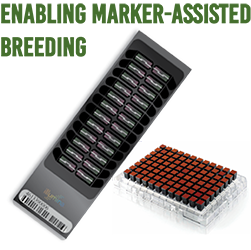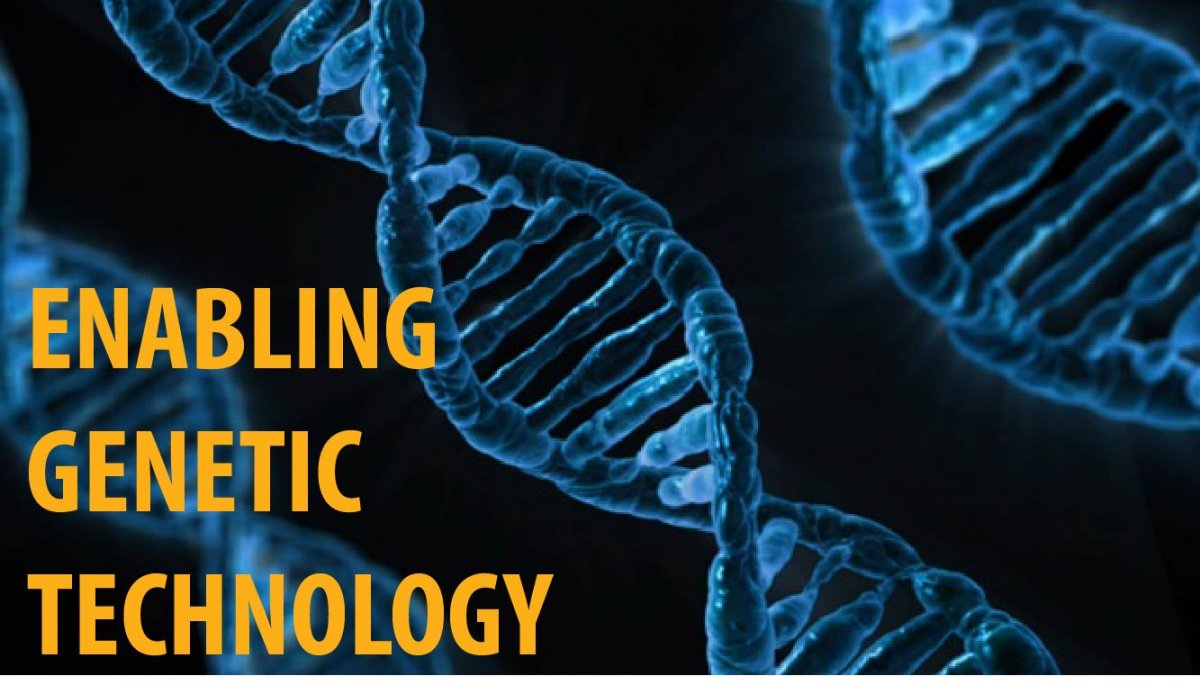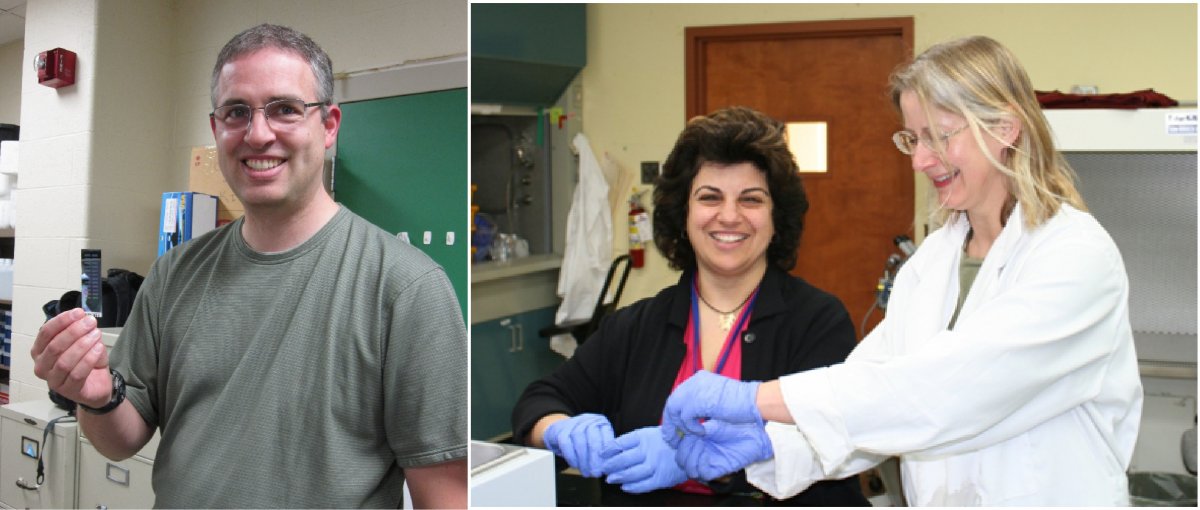
ISSUE: Almond, apple, caneberries, cherry, peach, pear, rose, and strawberry all belong to the same plant family, Rosaceae. Profitability and sustainability of U.S. rosaceous crop industries require an understanding of changing production, market, and consumer preferences, so breeders and supporting programs can develop and deploy new cultivars addressing those preferences.
To efficiently and more rapidly deliver superior, commercially successful new varieties, breeding efforts can benefit greatly from new technologies and personnel trained in these appropriate technologies. Marker-Assisted Breeding (MAB) using DNA diagnostic information is one such technology that is particularly effective to select for desirable fruit quality traits such as size, color, flavor, and texture.
DNA diagnostic information helps breeders make creative parent combinations and select for desirable traits at the seedling stage, before plants even flower. This early screening reduces expenditures for planting, maintaining, and testing full-grown plants. While this approach can enhance all rosaceous crop breeding programs, it is especially helpful in perennial rosaceous crops such as fruit trees, because it can take more than 25 years to develop and commercialize a new variety. Tools, knowledge, and training in this area were needed for Rosaceae breeding to capitalize on decades of upstream scientific advances.
WHAT HAS BEEN DONE: The RosBREED project has developed and, for the first time, enabled the application of DNA diagnostic information to assist fruit breeding decisions on four rosaceous crops: apple, cherry, peach, and strawberry. United States breeding programs can now efficiently identify superior parents for making crosses and reduce expenses required to grow seedlings of unknown quality to maturity for field selection. The technologies are applicable for all Rosaceae crops.
RosBREED has created an advanced set of broadly accessible software tools and online resources so breeders can readily use MAB technologies. Socio-economists surveyed Rosaceae breeders, growers, market intermediaries, and consumers so that project resources for genetic test development were directed to better understand which traits would best be improved via MAB. A cohort of new graduate students was trained in modern breeding techniques.
IMPACT: Using RosBREED’s socio-economic and DNA diagnostic information and tools, breeders can now make exciting crosses by selecting parents that provide the highest proportion of desired offspring types for valuable fruit quality traits. DNA information then allows breeders to efficiently eliminate offspring unlikely to have desired fruit qualities preferred by industry sectors and consumers. Newly-trained professionals are now available to conduct MAB for efficient, accurate, and creative development of superior new cultivars addressing consumer and industry needs.
For example, the apple breeding program at the University of Minnesota used DNA tests to select parents most likely to produce the highest number of desirable offspring with superior crispness and juiciness, long fruit storability, disease resistance, and attractive skin color. Combining this information with flowering time, tree availability, and pollen quality, the team made many exciting crosses in 2012. Because only some of the resulting offspring will bear the desired trait combinations, MAB was further used to eliminate undesirable seedlings and reduce costs of field testing.

ISSUE: To safeguard sustainability of the rosaceous fruit industry in a highly competitive business environment, Rosaceae crop breeding programs need to develop and commercialize new varieties that are productive and appealing to stakeholders, including producers, processors, shippers and packers, retailers, and consumers. However, many rosaceous crops are long-generation tree crops. Development and commercialization of new varieties can take more than 25 years. To serve the needs of a wide range of stakeholders, breeders face challenges in allocating appropriate attention and resources to the many possible traits. Breeders also have limited tools for efficiently and accurately improving “complex” traits that are influenced by many genetic factors acting in concert.
WHAT HAS BEEN DONE: Demonstration breeders are now routinely using and benefiting from the DNA diagnostic tools developed by RosBREED to assist breeding decisions on five rosaceous crops: apple, peach, sweet cherry, tart cherry, and strawberry. During several workshops, the wider community of U.S. Rosaceae breeders was trained in the core concepts of marker-assisted breeding (MAB) and provided with resources to enable their adoption of efficient MAB approaches.
IMPACT: RosBREED genomics and genetics researchers eliminated the need for individual breeders to develop DNA diagnostic tests. Because the new DNA diagnostic information was developed using germplasm from U.S. breeding programs, the new tools are directly applicable in these programs. The workshops helped breeders overcome various concerns. Breeders are now better prepared to use MAB to make their programs more effective.
A baseline survey conducted in 2009 established the level of MAB adoption among U.S. Rosaceae breeders and allied scientists at that time. Both groups reported moderately positive attitudes toward the future importance of MAB but low levels of actual use of genetic tests in their work. A follow-up survey in December 2013 will allow us to quantify change in adoption over these years.
During the project period, RosBREED provided three in-depth workshops for the dozen RosBREED “demonstration” breeders and five workshops for the wider community of U.S Rosaceae breeders. On average, more than 80 percent of workshop participants “strongly” or “moderately” agreed that they gained new knowledge which they intended to apply in their work. In interviews with a random sample of breeders in winter 2011-12, almost three quarters reported using markers for plant identification and about one quarter were using markers for more advanced applications.

ISSUE: Prior to this project, genetic tests for traits of interest in Rosaceae crops either had not yet been developed or they were expensive and cumbersome to use. Genome-scanning DNA markers were small in number which did not allow the efficient identification of chromosome regions influencing important traits. Moreover, most of these markers were laborious to use and relatively expensive, therefore limiting their applications in genetic discovery and breeding.
PROGRESS: Cost-effective, high throughput marker technologies were developed, commercialized, and made available to the U.S. and worldwide scientific community. Thousands of single nucleotide polymorphism (SNP) markers were developed for apple, peach, cherry, and cultivated strawberry in international RosBREED-led efforts. The genome scan platforms developed were the 9K (9000 genetic points testable across the crop’s chromosomes) peach, 8K apple, and 6K peach SNP marker Infinium® II arrays partnering with the commercial genomics technology company, Illumina Inc., and the 90K SNP marker (IStraw90™) Axiom® genotyping array, partnering with Affymetrix Inc.
IMPACT: Rosaceous breeders and geneticists can now efficiently generate and analyze thousands of well-performing genetic markers at low cost. These genetic marker tools are being used by numerous U.S. breeding programs to better understand the genetic control of highvalue
traits and make more informed crosses.
IStraw90™ is the first genome-wide scan ever developed for an octoploid crop (which is an organism like strawberry that has eight rather than two sets of chromosomes). This enabling genetic technology paves the way for further advances in genomics and breeding for other important polyploid crops (organisms with more than two sets of chromosomes).
As a result of developing and using these genome-wide scans:
- Arrays to process 20,000 samples at a value exceeding 1.3 million dollars were purchased from Illumina Inc., by ten groups in ten countries.
- Fourteen scientific articles were published to date describing the use of these tools to identify genomic regions influencing important traits, to characterize the genetic architecture of complex traits in apple, peach, and cherry, and other genetics and breeding applications like confirming or deducing pedigrees.
- IStraw90™, the first high-resolution genome-wide scan ever developed for an octoploid crop, is now available for use by breeders and researchers.

